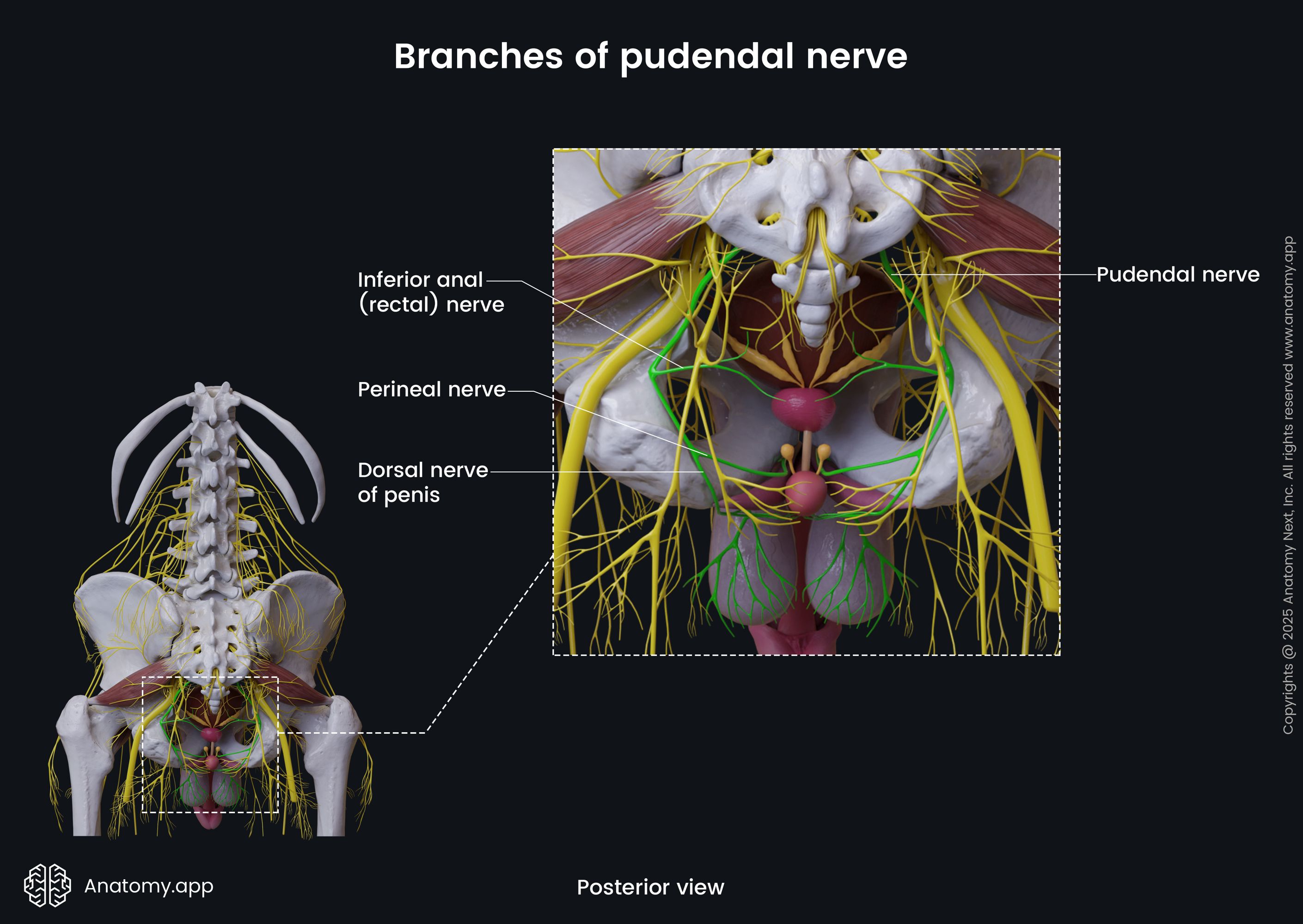- Anatomical terminology
- Skeletal system
- Joints
- Muscles
- Heart
- Blood vessels
- Lymphatic system
- Nervous system
- Respiratory system
- Digestive system
- Urinary system
- Female reproductive system
- Male reproductive system
- Endocrine glands
- Eye
- Ear
Pudendal nerve
The pudendal nerve (Latin: nervus pudendus) is a mixed nerve that originates from the sacral plexus and innervates the perineal region, perineal muscles, skin, external genitals, and organs of the lesser pelvis.


The pudendal nerve arises from the ventral branches of the first, second, third and fourth sacral nerves (S1 - S4).
The pudendal nerve runs through the infrapiriform foramen, then it curves around the ischial spine, reaches the ischioanal fossa via the lesser sciatic foramen and runs along the lateral wall of it. Then it passes through the pudendal canal, ventrally along the deep transverse perineal muscle to reach the pubic symphysis. Further the pudendal nerve continues as the dorsal nerve of the penis or dorsal nerve of the clitoris.
The pudendal nerve gives rise to the inferior rectal nerves and the perineal nerve.

The pudendal nerve is the most important nerve for perineal innervation, it supplies the perineal muscles, skin of the perineal and anal regions, external genitals, as well as anal muscles - the external anal sphincter and levator ani muscles.